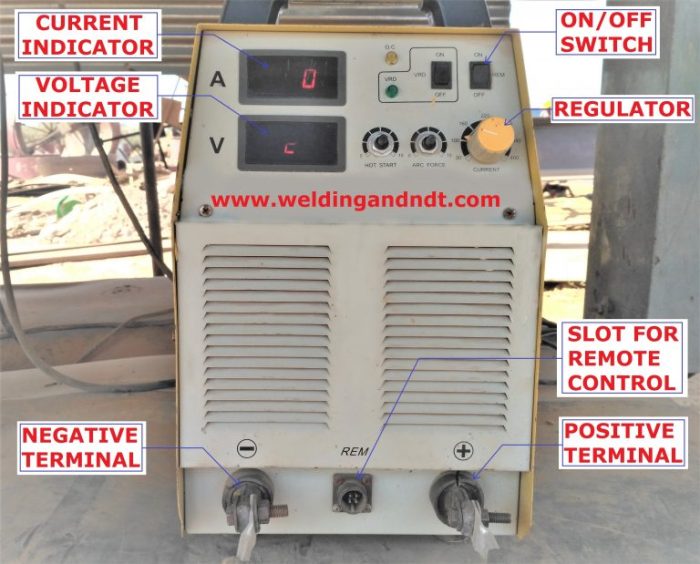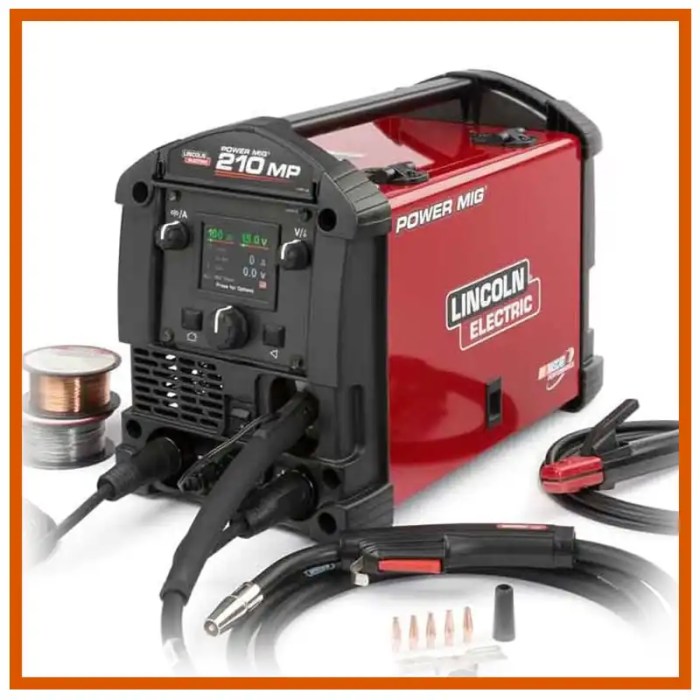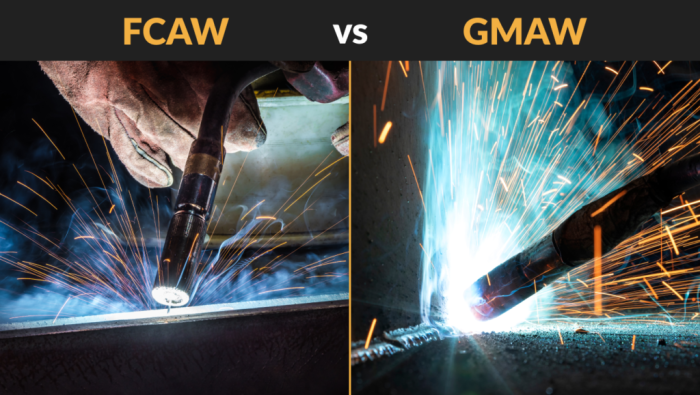Fcaw and smaw use the same type of power source. – FCAW and SMAW, two distinct welding processes, share a fundamental commonality: the power source. This shared element forms the cornerstone of their operations, enabling them to deliver exceptional welding outcomes. In this exploration, we delve into the intricacies of this shared power source, examining its advantages, limitations, and the nuances that set FCAW and SMAW apart.
The power source serves as the heart of both FCAW and SMAW, providing the electrical energy necessary to generate the welding arc. This arc, in turn, melts the base metal and filler material, facilitating the formation of a strong and durable weld.
Understanding the nature of this power source is paramount to comprehending the capabilities and applications of these two welding processes.
FCAW and SMAW Power Sources

FCAW (Flux-Cored Arc Welding) and SMAW (Shielded Metal Arc Welding) utilize the same type of power source: a welding transformer or rectifier. These power sources convert alternating current (AC) from the mains supply into direct current (DC) for welding. The DC output provides a stable and controlled arc for both FCAW and SMAW processes.The
primary advantage of using a transformer or rectifier as the power source for FCAW and SMAW is its versatility. These power sources can be adjusted to deliver a wide range of current and voltage outputs, making them suitable for welding a variety of materials and thicknesses.
Additionally, they are relatively inexpensive and easy to maintain, making them accessible to both professional welders and hobbyists.However, there are some limitations or considerations when using a transformer or rectifier as the power source for FCAW and SMAW. One limitation is that the power source can be bulky and heavy, especially for high-output models.
Another consideration is that the power source requires a stable AC input supply, which may not be available in all locations.
FCAW and SMAW Shielding Gases

FCAW and SMAW both require shielding gases to protect the weld pool from contamination by atmospheric gases such as oxygen and nitrogen. The shielding gas is typically a mixture of inert gases, such as argon, helium, or carbon dioxide.In FCAW, the shielding gas is supplied through the flux-cored wire.
The flux core contains a mixture of deoxidizers, alloying elements, and other compounds that produce a protective gas shield when heated. The shielding gas helps to prevent oxidation of the weld pool and improves the weld quality.In SMAW, the shielding gas is supplied from a separate gas cylinder.
The gas is typically argon or a mixture of argon and carbon dioxide. The shielding gas flows through the welding torch and surrounds the arc, creating a protective atmosphere around the weld pool. The shielding gas prevents oxidation and contamination of the weld pool, resulting in a clean and high-quality weld.The
choice of shielding gas depends on the material being welded and the desired weld characteristics. For example, argon is often used for welding aluminum and stainless steel, while a mixture of argon and carbon dioxide is commonly used for welding mild steel.
FCAW and SMAW Equipment Setup

The equipment setup for FCAW and SMAW is similar, but there are some key differences.| Equipment | FCAW | SMAW ||—|—|—|| Power source | Welding transformer or rectifier | Welding transformer or rectifier || Shielding gas | Flux-cored wire | Separate gas cylinder || Welding gun | FCAW welding gun | SMAW electrode holder || Electrodes | Flux-cored wire | Stick electrodes |The main difference between the equipment setup for FCAW and SMAW is the type of welding gun or electrode holder used.
FCAW uses a specialized welding gun that feeds the flux-cored wire into the weld pool. SMAW, on the other hand, uses a simple electrode holder that holds the stick electrode.Another difference is that FCAW typically requires a separate gas cylinder to supply the shielding gas, while SMAW uses the flux core in the wire to generate the shielding gas.
FCAW and SMAW Weld Characteristics

The weld characteristics of FCAW and SMAW differ depending on the process parameters, such as the welding current, voltage, and travel speed.| Weld Characteristic | FCAW | SMAW ||—|—|—|| Weld appearance | Smooth and uniform | Rippled and textured || Penetration | Medium to deep | Medium to shallow || Mechanical properties | Good to excellent | Good to excellent |FCAW typically produces a smoother and more uniform weld appearance than SMAW.
This is because the flux-cored wire melts evenly and produces a consistent weld pool. SMAW, on the other hand, produces a more rippled and textured weld appearance due to the irregular melting of the stick electrode.FCAW generally offers deeper penetration than SMAW.
This is because the flux-cored wire produces a more concentrated arc than the stick electrode. However, SMAW can be used to achieve shallow penetration welds by reducing the welding current and voltage.Both FCAW and SMAW can produce welds with good to excellent mechanical properties.
The mechanical properties of the weld depend on the material being welded, the welding parameters, and the post-weld heat treatment.
FCAW and SMAW Applications: Fcaw And Smaw Use The Same Type Of Power Source.
FCAW and SMAW are widely used in a variety of industrial and construction applications.
- *FCAW is commonly used for welding thick materials, such as steel plates and pipes. It is also used for welding in confined spaces, such as inside tanks and boilers.
- *SMAW is commonly used for welding thin materials, such as sheet metal and wire. It is also used for welding in outdoor applications, where wind and other environmental factors can affect the shielding gas.
Both FCAW and SMAW are versatile welding processes that can be used for a wide range of applications. The choice of process depends on the material being welded, the desired weld characteristics, and the specific application requirements.
Helpful Answers
What are the advantages of using the same power source for FCAW and SMAW?
The shared power source simplifies the setup and operation of both FCAW and SMAW, as welders can utilize the same power source for both processes. This reduces the need for multiple power sources, saving space and streamlining the welding process.
Are there any limitations to using the same power source for FCAW and SMAW?
While the shared power source offers advantages, it also imposes certain limitations. The power source must be capable of delivering the appropriate voltage and amperage for both FCAW and SMAW, which may limit the range of welding applications that can be performed.
How does the power source affect the weld quality in FCAW and SMAW?
The power source plays a crucial role in determining the quality of welds produced by FCAW and SMAW. The stability and consistency of the power source directly impact the arc characteristics, which in turn influence the weld penetration, bead profile, and overall weld integrity.